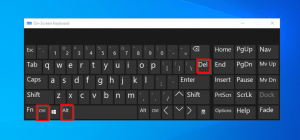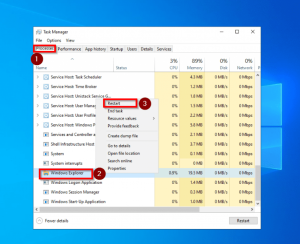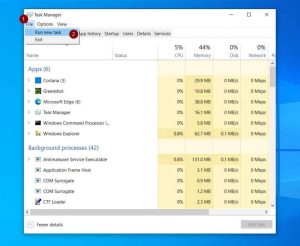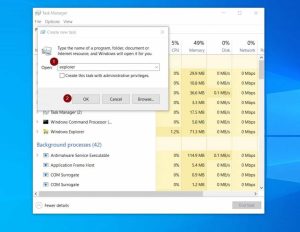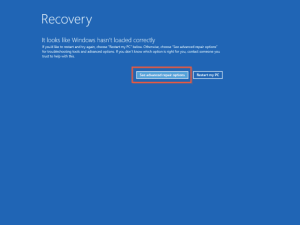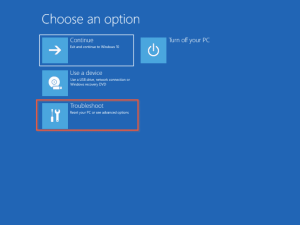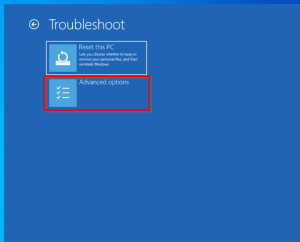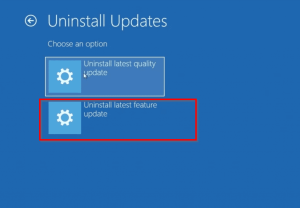Are your Windows 10 PC’s Personalized Settings Not Responding after a reboot following an update? There is no need to be concerned because this tutorial provides three answers to this problem. The first method I’ll show you is to restart the PC to repair Windows 10 customized settings that are not responding. The other option, on the other hand, entails restarting Windows Explorer to resolve the issue.
Meanwhile, uninstalling the most recent update is the third solution for Windows 10 customized settings not responding. As a result, I believe that following the steps in the tutorial should address the problem.
Furthermore, this tutorial includes a FAQ section that seeks to answer some of the most often asked concerns concerning this issue.
How to fix Personalized Settings Not Responding In Windows 10
Restarting the computer may resolve the problem of Windows 10 Personalized Settings not responding.
Before I lead you through the technical solutions in this tutorial, a simple reboot may resolve the issue. To complete this activity, follow the instructions below.
1. On your keyboard, press CTRL + Alt + Delete.
2. Then, press the power button in the bottom right corner and select Restart.
3. Check to see whether the problem persists after restarting the machine. If yes, continue reading for the next solution.
Restarting Windows Explorer would resolve the Windows 10 Personalized Settings Not Responding issue.
Restarting Windows Explorer will also resolve the issue of the Windows 10 customized settings not responding. The steps are outlined below.
1. On your keyboard, press CTRL + Alt + Delete.
2. Select Task Manager from the list that displays on the screen.
3. Task Manager should open on the Processes tab by default. Then, right-click Windows Explorer under the Windows processes section and select Restart.
4. If Windows Explorer does not appear in the Task Manager list, it is possible that it was not launched. In such a case, follow the instructions below to launch Windows Explorer.
5. While remaining on the Task Manager’s Processes tab, click File, then choose Run new task.
6. When the Create new task pop-out box appears, type “explorer” (without quotation marks) and press OK.
7. Finally, restart your PC to see whether the problem has been resolved.
I’m hoping this resolves the problem. However, if the problem persists, you might wish to try the following remedy.
Uninstalling Updates Resolves Windows 10 Personalized Settings Not Responding
Corrupted updates in rare situations might cause this problem. As a result, removing the previously installed updates should resolve the issue of Personalized Settings Not Responding.
To complete this activity, follow the procedures outlined below.
1. Hold down the power button on your PC until it turns off.
2. Then, hit the power button once again to restart your computer. When the Windows 10 machine starts up, however, hit and hold the power button again until it shuts down.
3. The PC will then boot into Recovery Mode for the third time. Click the See advanced repair options option on the first screen of Recovery Mode.
4. Select Troubleshoot from the options screen.
5. Then, on the Troubleshoot screen, select the Advanced options option.
6. Uninstall Updates may be found on the Advanced Options screen.
7. After that, select Uninstall Latest Quality Update.
8. Then, to completely delete the update, follow the on-screen prompts. When the update has finished uninstalling, restart your computer to see if the problem has been resolved.
If the problem persists, follow the procedures in this section again. When you reach the last step, choose Uninstall Latest Feature Update instead.
Frequently Asked Questions
ALSO READ: Cortana
Frequently Asked Questions About Personalized Settings Not Responding Windows 10 :
1. How Do I Repair Personalized Settings Not Responding on Windows 10?
You may resolve this problem by restarting Windows Explorer. Follow the instructions below to complete this activity.
a) Select Task Manager from the Windows Start menu.
b) It should be in the Processes tab by default in Task Manager. As a result, scroll down and look for Windows Explorer in the Windows Processes category.
c) Right-click Windows Explorer and choose Restart.
After that, restart your PC to see whether the problem has been repaired.
2. How Do I Boot Into Windows 10 Recovery Mode?
Follow the instructions below to boot into recovery mode in Windows 10.
a) Turn off your computer by pressing and holding the power button.
b) Next, hit the power button one more to restart your computer. When it starts up, hit and hold the power button again until it shuts off.
c) When you restart the computer for the third time, it will enter recovery mode.
3. When was Windows 10 released?
On July 15, 2015, Microsoft introduced Windows 10 to production. However, it was not available for purchase until July 29, 2015.
4. Does F8 work to enter Recovery Mode in Windows 10?
When attempting to boot into recovery mode in Windows 10, the F8 function key does not operate by default. You may, however, manually activate the key.
5. Who Is the Owner of the Windows Operating System?
Microsoft Corporation owns the Windows operating system.
My Final Thoughts on Windows 10 Personalized Settings Not Responding
Rebooting your Windows 10 computer after an update may become stuck in the customized settings area. Several circumstances cause this problem, and it prevents your computer from starting. You may begin to panic when this happens, but you do not need to panic. I believe the methods presented in this tutorial will resolve the Personalized Settings Not Responding issue.
ALSO SEE:Cortana not working
In particular, I demonstrated how to resolve the problem by restarting your computer in this instruction. If that didn’t work, I also supplied instructions for restarting Windows Explorer to resolve the issue. Finally, I proposed a workaround that entails deleting previously installed updates. So, if you carefully followed the steps/solutions in this article, the Windows 10 Personalized Settings Not Responding problem should be cured.

